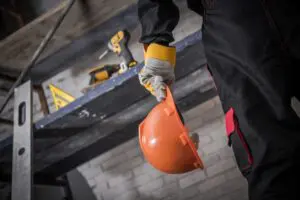Motorcycle and car collisions are unfortunately common on roadways, and they can result in devastating consequences for motorcyclists. Among the various types of motorcycle and car collisions, one of the most prevalent is the “left-turn” or “right-turn” scenario. These collisions occur when a car makes a left or right turn and fails to notice an approaching motorcycle, leading to a dangerous collision. The size and blind spots of cars, combined with the agility and maneuverability of motorcycles, create a potential recipe for disaster
car and motorcycle collisions can have devastating consequences due to the significant size and weight disparity between these vehicles. While various types of collisions can occur, one of the most common and dangerous is the “rear-end” collision. In this scenario, a car collides with the rear of a motorcycle, often resulting in severe injuries or fatalities for the motorcyclist. The combination of a car’s limited visibility and the vulnerability of motorcycles on the road contributes to the frequency and severity of rear-end collisions. In this article, we will delve into the causes, factors, and potential prevention strategies for rear-end car and motorcycle collisions. Understanding the dynamics of this common collision type is essential for fostering safety and promoting awareness among both car drivers and motorcyclists on our roadways.
The most common motorcycle and car accidents
Motorcycle and car collisions can be devastating, posing significant risks to the motorcyclist due to the size and weight disparity between these vehicles. Understanding the most common types of motorcycle and car collisions is crucial for promoting road safety and preventing accidents. Let’s explore some of the most prevalent collision scenarios:
Left-Turn Collisions:
Left-turn collisions are one of the most common types of accidents involving motorcycles and cars. These occur when a car driver makes a left turn at an intersection or while changing lanes, failing to notice an approaching motorcycle. Due to the size and blind spots of cars, motorcyclists can easily go unnoticed, resulting in severe crashes.
Right-Turn Collisions:
Similarly, right-turn collisions occur when a car driver fails to see an approaching motorcycle while making a right turn. The motorcycle may be in the car’s blind spot or traveling in the adjacent lane, leading to a collision. Motorcyclists should be cautious when passing cars on the right side, as they may attempt a right turn without noticing the motorcycle.
Rear-End Collisions:
Rear-end collisions between motorcycles and cars can occur when a car driver fails to maintain a safe distance or misjudges the motorcycle’s speed. This type of collision can result in the motorcycle being crushed or trapped underneath the car, leading to severe injuries or fatalities.
Lane Change Accidents:
Lane change accidents involve a car driver changing lanes without checking their blind spots or failing to see a motorcycle already occupying the intended lane. Motorcyclists should be cautious when riding alongside or passing cars, as sudden lane changes can result in dangerous collisions.
Sideswipe Accidents:
Sideswipe accidents occur when a car and motorcycle are traveling parallel to each other, and the car unintentionally strikes the motorcycle. This can happen during lane changes, merging, or when the car drifts into the motorcycle’s lane.
Preventing Motorcycle and car Collisions:
Promoting safety and preventing motorcycle and car collisions require the collective efforts of both car drivers and motorcyclists. car drivers should be vigilant and actively check blind spots, use turn signals early, and give motorcycles ample space. Motorcyclists should ride defensively, stay visible, and be aware of the car’s blind spots. Communication through hand signals and maintaining a safe following distance can also help mitigate the risk of collisions.
Understanding the most common types of motorcycle and car collisions is essential for enhancing road safety. Both car drivers and motorcyclists must be aware of their surroundings, exercise caution, and follow traffic rules to prevent accidents. By promoting mutual respect, awareness, and responsible driving practices, we can reduce the frequency and severity of motorcycle and car collisions on our roadways.
Where most car/motorcycle collisions take place
car and motorcycle accidents can occur anywhere, but certain locations tend to be more prone to these types of collisions. Recognizing these high-risk areas can help raise awareness among drivers, promote caution, and potentially reduce the occurrence of accidents. Let’s explore some of the places where most car and motorcycle accidents take place:
Intersections:
Intersections are notorious hotspots for accidents involving cars and motorcycles. These busy areas often witness a convergence of vehicles from different directions, increasing the risk of collisions. Factors such as red-light violations, failure to yield the right-of-way, and improper turns contribute to accidents at intersections.
Highway Exits and Entrances:
Highway exit and entrance ramps are another common site for car and motorcycle accidents. Rapid changes in speed, merging maneuvers, and inadequate following distances can lead to dangerous situations. car drivers and motorcyclists must exercise caution and be aware of each other’s presence during these maneuvers.
Urban Areas:
car and motorcycle accidents are more prevalent in densely populated urban areas due to higher traffic volumes, increased congestion, and a mix of vehicles sharing the road. Urban environments pose challenges for both car drivers and motorcyclists, with factors such as distracted driving, sudden lane changes, and limited maneuvering space increasing the risk of accidents.
Construction Zones:

Construction zones present hazards for all vehicles on the road, including cars and motorcycles. Narrower lanes, lane shifts, uneven surfaces, and changing traffic patterns can make these areas more accident-prone. Increased vigilance, reduced speeds, and adhering to posted signs are crucial in minimizing the risk of accidents in construction zones.
Rural Roads:
Rural roads may seem less hazardous, but they can be challenging for car drivers and motorcyclists alike. Factors such as narrow lanes, limited visibility, wildlife crossings, and undivided highways increase the likelihood of accidents. Motorcyclists should be cautious when sharing rural roads with larger cars, while car drivers must remain attentive to the presence of motorcycles.
Parking Lots:
Parking lots are another common location for car and motorcycle accidents. Poor visibility, congestion, pedestrians, and erratic driving behavior within parking lots can lead to collisions. Drivers of both cars and motorcycles should exercise caution, maintain slow speeds, and watch for pedestrians and other vehicles.
Highway Interchanges:
Highway interchanges, where multiple lanes converge, pose inherent risks for car and motorcycle collisions. Rapid lane changes, merging challenges, and varying speeds of vehicles create a potentially hazardous environment. Extra caution, proper signaling, and merging with ample space are vital for safe navigation through highway interchanges.
While these locations are more prone to car and motorcycle accidents, it is essential to remember that accidents can happen anywhere and at any time. To promote safety, all drivers must adhere to traffic laws, stay focused, and be aware of their surroundings. By recognizing high-risk areas and adopting defensive driving practices, we can work together to reduce the occurrence of car and motorcycle accidents and make our roads safer for everyone.
What to do in the event of a motorcycle and car accident
Being involved in a motorcycle and car accident can be a distressing and overwhelming experience. In such situations, it is essential to stay calm and take immediate action to ensure your safety and protect your legal rights. Knowing what to do in the event of a motorcycle and car accident can help mitigate further harm and ensure a smoother post-accident process. Here are the steps to follow:
Ensure Safety:
Your safety and the safety of others involved should be your top priority. Move to a safe location if possible, away from traffic and any potential hazards. Turn on hazard lights and use warning devices, such as flares or reflective triangles, to alert other drivers.
Call for Medical Help:
Check yourself and others for injuries. If anyone requires immediate medical attention, call emergency services right away. Even if you feel fine, it is advisable to seek medical evaluation as some injuries may not be immediately apparent. Follow medical professionals’ recommendations and keep records of all medical treatment and expenses.
Contact the Authorities:

Call the police to report the accident, providing accurate and detailed information about the incident. The police report will serve as an official record and may be crucial for insurance claims and legal proceedings. Cooperate fully with the responding officers and provide them with accurate and factual information.
Document the Accident Scene:
If it is safe to do so, gather evidence at the accident scene. Take photographs or videos of the vehicles involved, the overall scene, and any visible damages. Capture the positioning of the vehicles, skid marks, and traffic signs. Also, collect the contact information of any witnesses who can provide statements about the accident.
Exchange Information:
Exchange contact and insurance information with the other party involved in the accident. Obtain their full name, phone number, address, driver’s license number, vehicle registration details, and insurance information. Be cooperative and provide your information when requested.
Do Not Admit Fault:
Avoid discussing fault or accepting blame for the accident, even if you believe you may have contributed to it. Fault determination is a complex legal matter that should be left to the authorities, insurance companies, and legal professionals.
Preserve Evidence:
Preserve any evidence related to the accident. This includes medical records, receipts for medical expenses, repair estimates for your motorcycle, and any communication with insurance companies or the other party involved. This evidence will be valuable in supporting your claim and protecting your legal rights.
Notify Your Insurance Company:
Promptly notify your insurance company about the accident and provide them with accurate details. Cooperate with their investigation and provide them with any requested documentation. Be cautious when providing statements, and consider consulting with an attorney before making official statements.
Consult with a Motorcycle Accident Lawyer:
Seek legal representation from a skilled motorcycle accident lawyer as soon as possible. They will guide you through the legal process, protect your rights, and advocate for fair compensation. A lawyer will handle communication with insurance companies, investigate the accident, gather evidence, and negotiate on your behalf.
Follow Legal Deadlines:
Be aware of the statute of limitations for filing a lawsuit. Each jurisdiction has specific time limits within which you must initiate legal action. Consult with your lawyer to ensure that you comply with these deadlines and preserve your right to seek compensation.
Remember, every motorcycle and car accident case is unique, and the specific steps may vary depending on the circumstances. By following these general guidelines and seeking legal guidance, you can protect your well-being, preserve evidence, and ensure that your rights are upheld throughout the post-accident process.
The Bottom Line
In conclusion, one of the most common types of car and motorcycle accidents is the left-turn collision. These accidents occur when a car makes a left turn at an intersection or while changing lanes and fails to notice an approaching motorcycle. Due to the size difference and visibility challenges, motorcycles are more susceptible to being overlooked, resulting in severe collisions.
Left-turn accidents highlight the need for increased awareness and caution on the part of both car drivers and motorcyclists. Car drivers should make a conscious effort to check for motorcycles before executing left turns, and motorcyclists should remain vigilant and anticipate potential left-turn hazards.
However, it is important to note that other types of car and motorcycle accidents also occur frequently, such as rear-end collisions, lane change accidents, and sideswipe accidents. Each of these accident types presents unique challenges and potential risks for motorcyclists.
To promote road safety and reduce the occurrence of car and motorcycle accidents, it is crucial for all road users to exercise defensive driving techniques, maintain proper following distances, use turn signals, and be aware of their surroundings. Additionally, educating both car drivers and motorcyclists about sharing the road and understanding each other’s vulnerabilities can foster a safer environment for everyone.
In the end, preventing car and motorcycle accidents requires a collective effort from both drivers and riders. By being mindful of the common types of accidents and implementing safe driving practices, we can work towards reducing the occurrence of these incidents and ensuring the well-being of all road users.
Munley Law Personal Injury Attorneys
609 Hamilton St.
Allentown, PA 18101
(610) 857-7424
Get Directions









